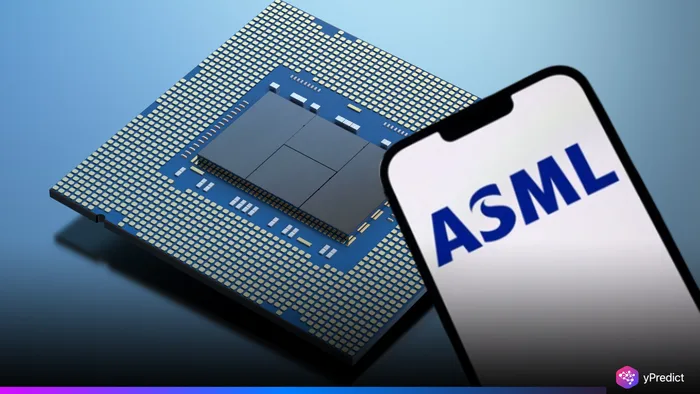
ASML’s leadership expects a strong rise in chip demand if the U.S. loosens restrictions on AI processor exports. Roger Dassen, the CFO, said easing trade rules, especially involving China, would directly support global demand for advanced chips. The semiconductor sector faces uncertainty from ongoing trade tensions, even as AI-driven growth pushes companies to invest more.
ASML, which provides essential lithography machines, sees trade relief as a potential catalyst for chipmaker investment. Governments and firms continue pouring funds into AI, but trade restrictions block the smooth movement of critical technology. Dassen believes even partial relief could lead to increased production orders.
Lifting US Curbs Could Reignite AI Investments
The Biden administration has imposed a series of export restrictions aimed at curbing China’s access to advanced AI processors. These restrictions have particularly impacted leading US chipmakers like Nvidia and AMD, which design chips often manufactured using ASML’s lithography equipment.
Dassen noted that a change in policy “would be positive for the entire value chain” in the semiconductor industry. From design to manufacturing, any movement toward greater access could accelerate AI chip demand across global markets. He also emphasized that the AI sector continues to be the main growth engine in the chip market.
The anticipation of eased export rules comes as several US lawmakers and corporate leaders debate the balance between national security and economic competitiveness. While Washington seeks to limit Beijing’s AI capabilities, global firms like ASML are feeling the pinch from constrained market access.
China’s Role in the AI Chip Ecosystem Remains Central
No matter the political relations, China is still one of the biggest markets for AI processors and semiconductor equipment. Continued investment in AI, smart factory infrastructure, and footprints for data centers make it attractive for next-gen semiconductor technologies.
ASML has long walked a fine line when it comes to exports to China. The Netherlands has imposed some limitations on selling its most advanced EUV machines to Chinese clients, partly due to US pressure. However, Dassen’s comments reflect a broader industry hope that trade restrictions will ease, allowing chipmakers to meet surging demand in Asia without political bottlenecks.
AI chip demand in China is particularly driven by hyperscalers and government-backed projects. With access to newer processors, the country could dramatically scale its AI capabilities, which in turn would boost demand for ASML’s tools.
Global AI Boom Needs Freer Trade Channels
The global boom in generative AI tools, from language models to robotics, relies heavily on continuous improvements in AI chip performance. ASML, Nvidia, and TSMC form a critical triangle in the supply chain that enables these advances.
Any disruption in this chain due to policy friction impacts not just China but also innovation timelines across the globe. Dassen’s statement underlines this interdependence. He said, “As the industry expands, more processors will be needed, and easing trade barriers makes that growth smoother.”
Analysts agree that unrestricted market access benefits the entire chip ecosystem. With growing demand from tech giants and startups alike, a more open trade landscape could deliver stronger revenue forecasts for players like ASML.
ASML Banks on Policy Shifts to Drive Future Gains
While ASML continues to deliver strong earnings, it is closely watching geopolitical developments. The company’s financial health is deeply tied to AI chip demand and the ability of its clients to purchase and deploy its machines worldwide.
If Washington rolls back some of its current curbs, ASML stands to benefit not just from China but also from renewed orders across Asia and emerging markets. Dassen concluded with optimism, stating that AI remains the “largest positive demand driver” for the chip industry.
In this complex landscape of AI growth and regulatory control, ASML hopes that diplomacy will make way for progress, unlocking the full potential of next-gen computing.






